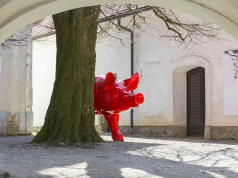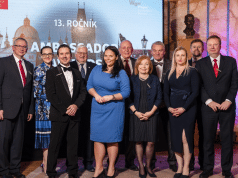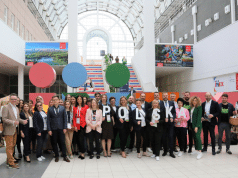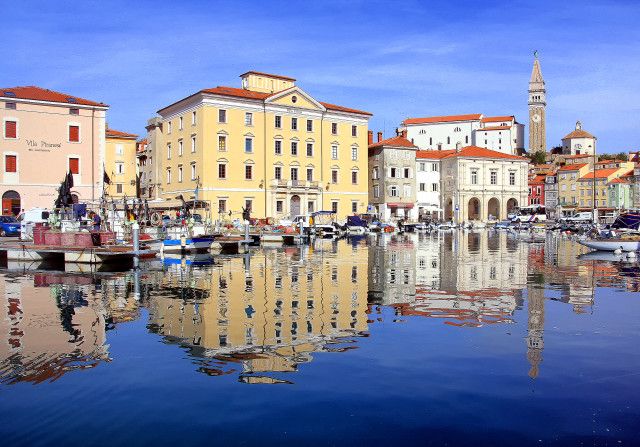
CITY OF SALT
Medieval Piran is definitely one of the most portrayed cities on Slovenian tourist postcards. It stays in my memory as a place where many movies from my youth were filmed. During the 1950s, it was the centre of the Slovenian film industry and the movie scenes filmed there left an unforgettable impression in the memory of the viewers and awakened in them a desire to come visit it.
Personally, I see Piran as a cultural and creative Mediterranean city, as for many years it has been delighting visitors of the Golden Drum Advertising Festival and many other events, which are all represented in the statue of the Serbian advertising pioneer Dragan Sakan standing next to the Teater Café. Only a few places are capable of paying tribute to the legend and the advertising genius of the Balkans in such a manner as Piran did.
[metaslider id=32892]
Top of the Adriatic
The lighthouse of Piran, the most exposed and attractive sight, represents a symbolic peak of the Northern Adriatic Sea and is known by all sailors. Together with St. George’s Church it is a symbolic centre of the Mediterranean. Piran and its surroundings feature many natural landmarks. The highest flysch wall on the Adriatic, the Strunjan cliff, with its peak 80 meters above sea level, olive groves in the hinterland and the famous Sečovlje saltpans are just a fraction of the rich natural and cultural heritage of this city. The list of cultural monuments is endless; to start off, there is Tartini Square, the Minorite Monastery, the famous “Benečanka”, a building that dates back to the era of the Venetian Republic, and the Tartini’s House.

Parenzana
For a long period of time Piran stood in the shadow of Trieste, which was due to its railway connection to Vienna the most important transport centre of the former Habsburg Monarchy. Therefore it is obvious that the city maintains a longstanding bond with Trieste. In 1902, after decades of planning, the railway between Trieste and Poreč was finally built, named the Parenzana. Until 1935, when it ceased to exist, the railway drastically improved accessibility to the cities next to it. In the following decades traffic was mostly roadbased due to the decision to close the railway. Today, the road link between both cities is adequate and of high quality, whereas accessibility by train is a far cry away from satisfactory and competitive. However, taking part in a special incentive cycling experience that connects three counties, namely Italy, Slovenia and Croatia, brings the memory of the Parenzana back to life.
Piran, the city of salt
The city owes its prosperity to the over a thousand-year long respectful coexistence between the saltpan workers and their natural environment. The salt fields of Sečovlje were formed on the alluvial deposits of the Dragonja river and are because of their exceptional landscape quite unique in the world. The warm moderate Mediterranean climate and the high salt content in soil and saltpans create an unusual living environment. The entire area of the saltpans is included on the Natura 2000 sites list – this decision is, among other, based on the EU Directive on the conservation of wild birds. Recently, attempts were made to obtain UNESCO world heritage status for the saltpans’ landscape and the city of Piran.
Piran Salt is an exceptional gift and is appraised by chefs from all around the world. The salt is registered as a Protected Designation of Origin, is not milled or refined, is rich in minerals and tastes extraordinary.
However, the saltpans hide another treasure. Where some parts of the saltpans are deserted but production is still taking place you will find the Lepa Vida Thallasso Spa, which is unique in the world. The seven hundred year old tradition of salt production is also related to the use of fango for curative purposes. A one-of-a-kind spa located in the open air that does business only in the summer months. Indulge yourself in a unique experience in the midst of a picturesque landscape park.
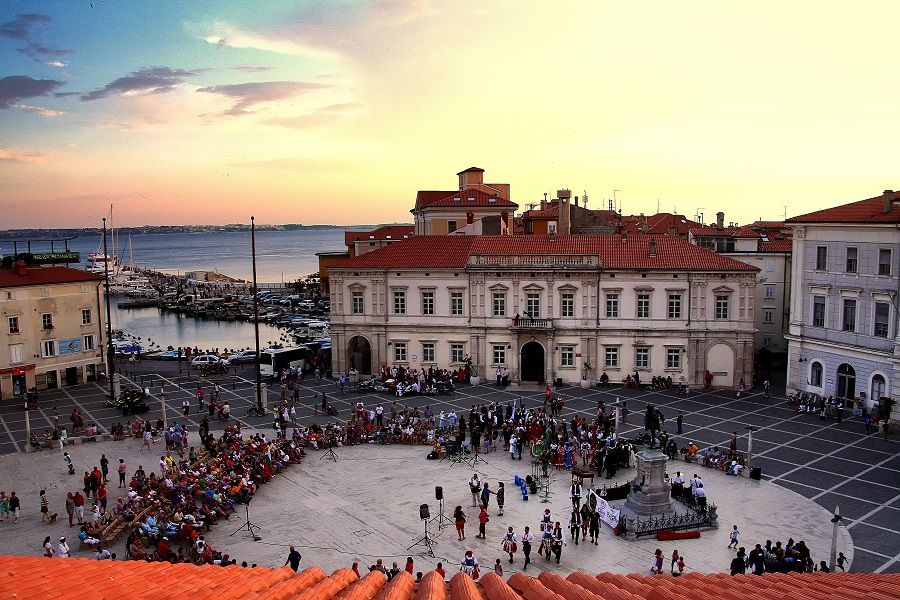
Slovenian Istria is the most visited tourist region in Slovenia. The present state of the region is the result of longstanding development of tourism, which started intensively already before the end of the 19th century. Since then the number of visitors in this area has started to increase gradually and was interrupted only during both World Wars and the Slovenian Independence War. The majority of tourist hotels are concentrated in neighbouring Portorož and Piran is the heart and soul of this destination. You have probably already experienced the flair of a Mediterranean city. Piran can be compared to some of the bestknown cities on the Adriatic coastline, which were marked by the years spent under the Venetian Republic. The only difference is that the summer crowds in Piran are bearable and the city is the most authentic of all. The colourful and playful city is full of restaurants, where lately fresh and also creative dishes made of local ingredients found their place. Thus the ordinary tourist culinary experience is complemented with various elements and impressions from the inner Istrian peninsula.
Meeting industry revolution
Where once a monastery stood, which came to an end in 1806 and was later used by the AustroHungarian army as a fortress, today you will find the St. Bernardin hotel located only a 10-minute walk away from Piran. The largest Slovenian hotel resort, which today has a capacity of 743 bedrooms, was established during the heyday of tourism development between 1974 and 1976. In 1995 the first true congress centre in the Adriatic region was opened. The congress centre could host up to 1,500 participants and served as a model for the development of similar centres in the region due to its functionality and features. In 2004, the centre was expanded and today it has 16 halls with a total of 2,600 seats. It is one of the largest congress hotels in this region, where each year over 200 large-scale congresses and events are organised.

The Mediterranean atmosphere
In Piran the Mediterranean tradition and history can be found at every step and this is exactly what excites visitors. The spacious Tartini Square is a unique place to welcome guests, and the Tartini Theatre, a forerunner of meeting tourism, is even today an interesting meeting industry location, whereby the paved streets and squares form the most beautiful background for creative teambuilding programmes. However, you will be surrounded by the most pristine Mediterranean flair on the cape of Piran. Fishermen used to live in this once poorer part of the city. Here Piran gets its full Mediterranean character and tradition, which makes it beautiful in a special way.
A city of creative ideas
Piran is a city of creative ideas – the squares, streets and different premises in the city form the heart of the Slovenian creative meeting industry. There are but few participants of various experts’ meetings on the Slovenian coastline who are able to resist the charm of the city, where culture, history, pleasure and the Mediterranean atmosphere intertwine. Piran is special and exclusive, and such are the events organised at carefully selected places, e.g. the monastery’s atrium or the enchanting garden of the parish on the top of a cliff.
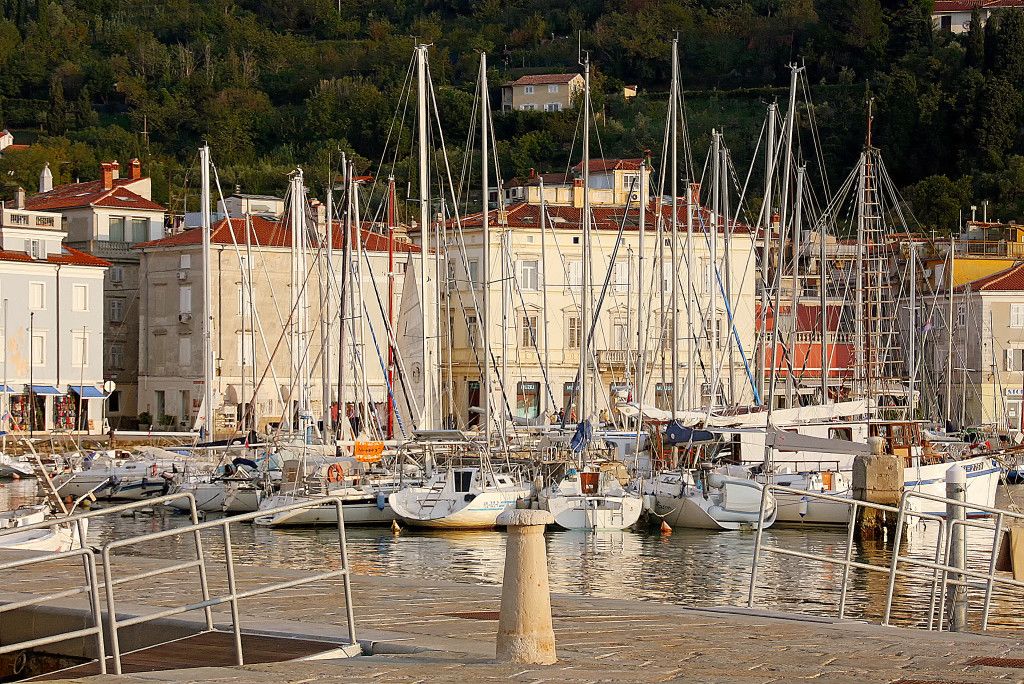
Destination score: 4.92– QUALITY MEETING DESTINATION
Scores:
5 excellent meeting destination
4 quality meeting destination
3 recommendable meeting destination
2 average meeting destination
1 passable
Individual score:
A: Natural and cultural factors 4.82
Piran has always been a meeting point of different languages and cultures, due to its prestigious strategic location, and the centre of northern Istria. Because of the seabed formation and the diverse flora and fauna, the underwater world which surrounds the cape of Piran is probably the most beautiful and the most vivid part of the Slovenian sea. Despite the shallow waters, the short coastline and intensive urbanisation, the Slovenian sea is invaluable from the viewpoint of biodiversity.
B: General and transport infrastructure 4.15
As its window to the rest of the world, the Slovenian coast plays a crucial role for Slovenia. In terms of traffic connections, we cannot avoid the fact that this is the only part of Slovenian territory which is not only accessible by road and air but also by sea. With the rapid development of the airports in Venice and Trieste it is well connected to the rest of the world from the standpoint of congress guests.
C: Tourist infrastructure 4.02
One could say that the Bernardin hotels are the main hotel resort in Piran, although one could easily place them in Portorož. On the one hand the complex offers a wide enough and sufficiently comprehensive range of services for all tastes, and on the other there are quite a few boutique hotels in the city, among which the Piran and the Tartini hotel are the most popular. The destination is persistently trying to improve its tourist services, which have not yet reached their full potential, and that is probably what makes it so attractive.
D: Meetings infrastructure 4.15
The Bernardin Congress Centre is the first and the largest hotel congress centre in Slovenia. Its multifunctional design sets the standards for all similar centres in the region. The biggest hall can host up to 1,100 participants. In Piran, you will find a true treasure from the Secession period of architecture, the Tartini Theatre. Furthermore, it has to be pointed out that you probably will not find more picturesque openair venues elsewhere on the Slovenian coastline.
E: Subjective grade 4.26
The locals and everyone involved in organising events must realize that they live in a historically and culturally important environment, which is full of interesting stories. These make the city unique and the guest curious. Stories can be a source of inspiration for incentive programmes, some of which have already been successfully implemented. One such example is the innovative incentive programmes organised by the Fonda family.
F: Marketing buzz 4.66
The joint promotion of Piran and Portorož may seem logical at first glance; however, a different approach is worth considering because these are two quite different MICE stories. The weakest link is the fact that Piran does not have an active office for the meeting industry which would summarise everything the city has to offer under one roof and place it on international markets. Besides, for an external observer, congress services seem poorly structured and stiff.
Comparison with the region:
Piran is probably the most inspiring Slovenian meeting destination. In the past, the people living in the city were inspired to discover things and to make more out of them, and therefore today Piran is full of artwork, marvellous facades and creative MICE stories. At each step exceptional encounters are waiting to be discovered and what they need is only a bit of a boost and some extra energy.
For quite some time the city has been living in the shadow of its notorious tourist neighbour Portorož; the truth is, however, that in the future Piran will stand out if it decides for the right differentiation. Incentive programmes do not have much competition in the Istrian region, and another big advantage is a fully developed meeting industry product and a tourist tradition. What is missing is better oriented destination management, which would ensure joint marketing with a stronger emphasis on Piran. To congress guests Piran can offer more than Portorož – the gastronomic scene is better and the spirit of the city is still largely untapped.
Cool meetings:
Piran sea bass – it became a local culinary specialty owing to the Fonda family, which has been breading this “king of all fishes” with passion and commitment on a sea farm in the middle of the Piran gulf. Each sea bass bears a designation of origin and a quality guarantee.
DID YOU KNOW?
The Tartini kiss – a kiss under the statue dedicated to the famous musician from Piran, Tartini – is a guarantee of luck and prosperity. Maybe you will find your luck on 6 July, International Kissing Day.



 Poreč Rise Up 2014
Poreč Rise Up 2014
